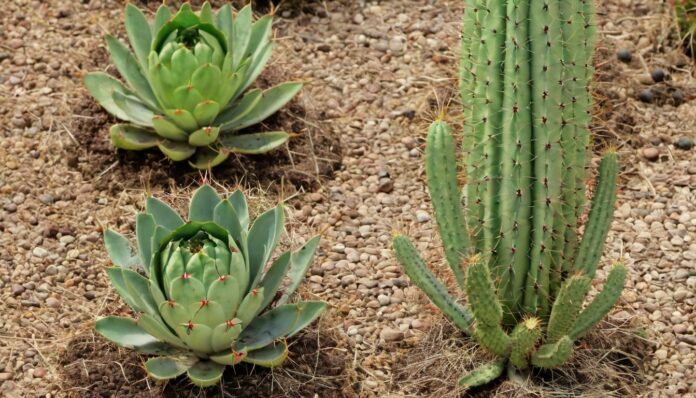Cacti are remarkable plants that thrive in some of the world’s driest environments. Known for their thick, fleshy stems and spines instead of leaves, they are incredibly efficient at storing water and surviving in harsh conditions.
Interesting Facts About Cacti
- Adaptation: Cacti are adapted to survive in arid environments with little rainfall.
- Water Storage: Their thick, fleshy stems store water to help them survive long dry periods.
- Spines: Cacti have spines instead of leaves, which reduce water loss and provide protection from herbivores.
- Photosynthesis: Unlike most plants, cacti perform photosynthesis through their stems.
- Variety: There are about 2,000 species of cacti.
- Native Range: Most cacti are native to the Americas, from Canada to Patagonia.
- Saguaro: The Saguaro cactus can grow over 40 feet tall and live for more than 150 years.
- Blossoms: Cacti flowers are often large and brightly colored, attracting pollinators like bees, birds, and bats.
- Night Blooming: Some cacti, like the night-blooming cereus, open their flowers only at night.
- Fruit: Many cacti produce edible fruit, such as the prickly pear.
- Root System: Cacti have shallow root systems that spread out widely to absorb moisture from light rains.
- Desert Icons: Cacti are iconic symbols of desert landscapes.
- Invasive Species: Some cacti have become invasive in regions outside their native range, like the prickly pear in Australia.
- Economic Use: Cacti are cultivated for ornamental purposes, food, and as a source of water in arid regions.
- Survival: Some cacti can survive freezing temperatures by dehydrating to avoid cell damage.
- Photosynthetic Process: Cacti use a process called CAM photosynthesis, which allows them to open their stomata at night to reduce water loss.
- Medicinal Use: Some cacti have been used in traditional medicine for their purported healing properties.
- Longevity: Some cacti species can live for hundreds of years.
- Cactus Spines: Spines can help cacti by reflecting sunlight, which reduces water evaporation and protects them from predators.
- Epiphytic Cacti: Some cacti, like the Christmas cactus, grow on other plants in rainforests.
- Resilience: Cacti can regenerate from pieces; a broken stem can root and grow into a new plant.
- Psychoactive Cacti: The peyote cactus contains mescaline, a psychoactive compound used in traditional Native American rituals.
- Water Use: Cacti have highly efficient water use mechanisms to survive in dry conditions.
- Cactus Fungi: Some cacti have symbiotic relationships with fungi that help them absorb nutrients.
- Sunlight: Cacti can thrive in full sunlight and intense heat.
